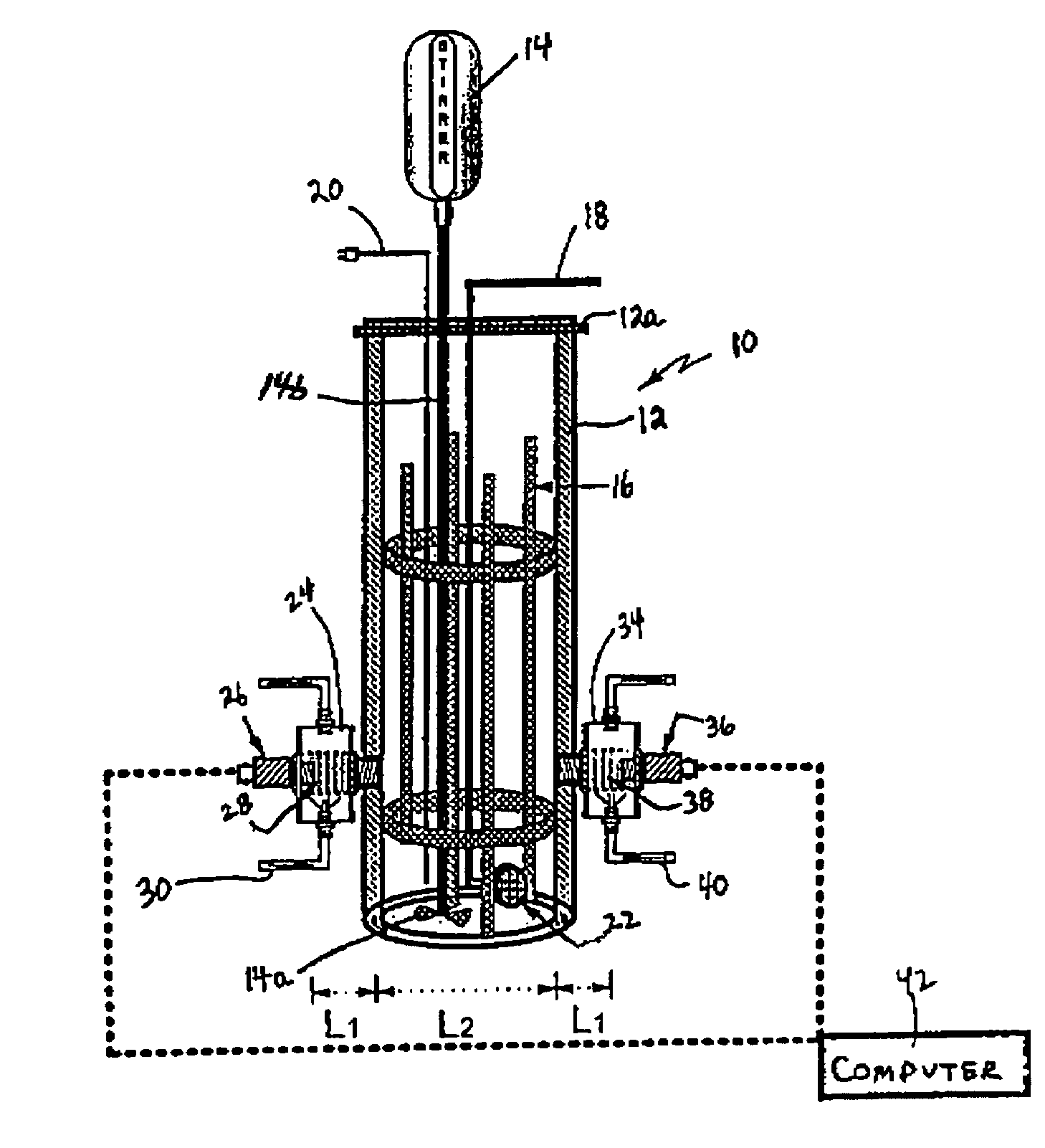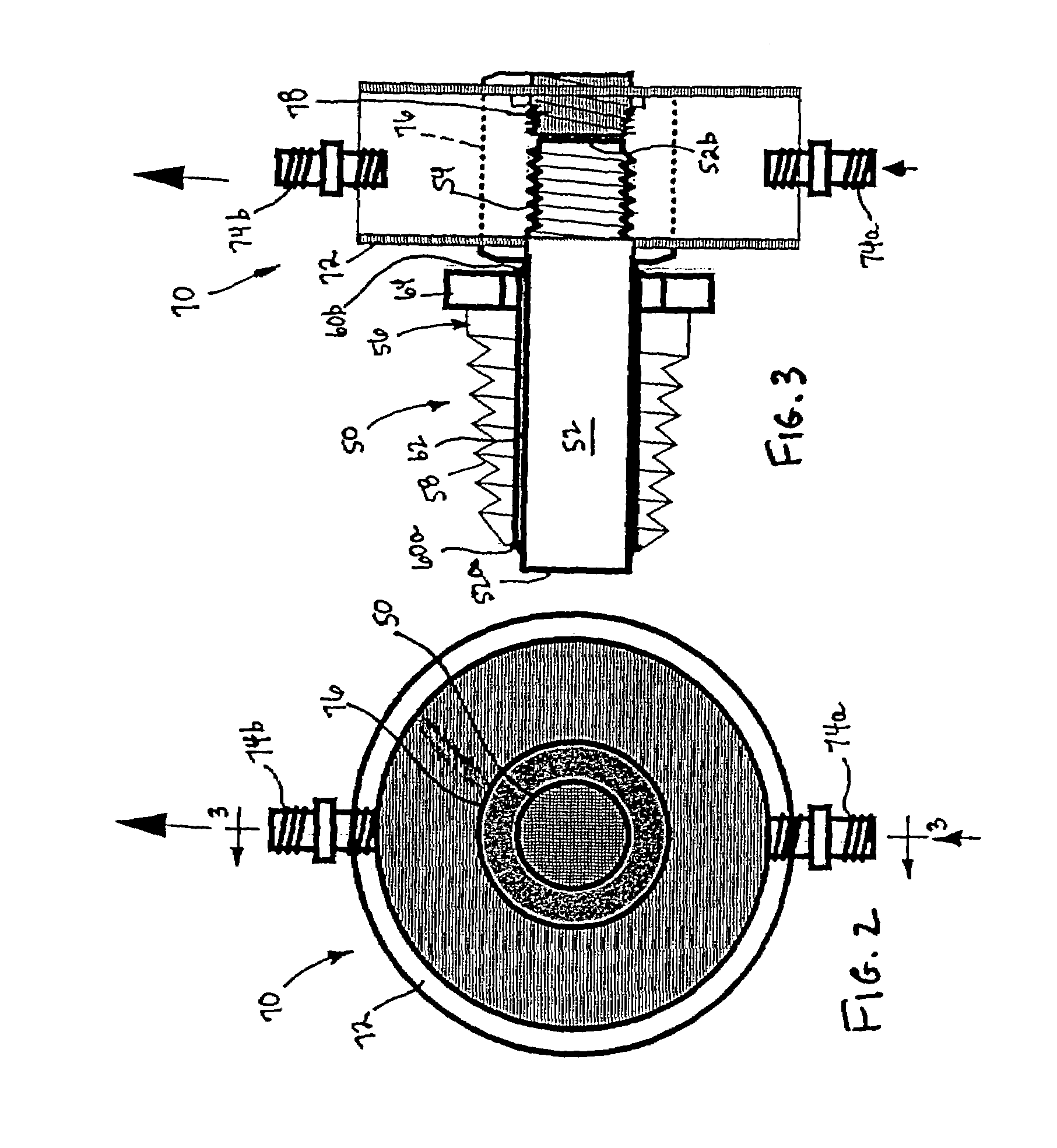Ultrasound analysis of slurries
a technology of ultrasonic transducers and slurries, which is applied in the direction of analysing fluids using sonic/ultrasonic/infrasonic waves, instruments, and specific gravity measurements, etc. it can solve the problems of inability to operate in inability to use high temperature and high pressure environments, and inability to use ultrasonic transducers under ambient conditions
- Summary
- Abstract
- Description
- Claims
- Application Information
AI Technical Summary
Benefits of technology
Problems solved by technology
Method used
Image
Examples
Embodiment Construction
[0041]Referring to FIG. 1, there is shown a schematic diagram of an arrangement for conducting ultrasound analysis of slurries in accordance with the principles of the present invention. The ultrasound analysis arrangement shown in FIG. 1 is particularly adapted for ultrasound analysis of slurries at high temperature. The ultrasound analysis arrangement includes an autoclave reactor 10 comprised of a reactor vessel 12 having a hollowed-out, generally cylindrical shape and including a cover 12a attached to the cylindrical reactor vessel in a sealed manner. Reactor vessel 12 is preferably comprised of stainless steel and in the embodiment shown in FIG. 1 is 10.6 cm. in diameter, 30 cm. in height and has a volume of 2.5 liters. Disposed within the reactor vessel 12 is the slurry being investigated. Also disposed within the reactor vessel 12 are four equally spaced, vertically baffles 16, each 1 / 8 of the diameter of the reactor vessel in width. Extending into the reactor vessel 12 is a ...
PUM
 Login to View More
Login to View More Abstract
Description
Claims
Application Information
 Login to View More
Login to View More - R&D
- Intellectual Property
- Life Sciences
- Materials
- Tech Scout
- Unparalleled Data Quality
- Higher Quality Content
- 60% Fewer Hallucinations
Browse by: Latest US Patents, China's latest patents, Technical Efficacy Thesaurus, Application Domain, Technology Topic, Popular Technical Reports.
© 2025 PatSnap. All rights reserved.Legal|Privacy policy|Modern Slavery Act Transparency Statement|Sitemap|About US| Contact US: help@patsnap.com



